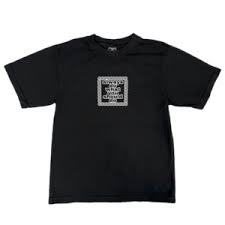Introduction
In the evolving landscape of modern warfare, drones have become an indispensable tool for reconnaissance, surveillance, and direct combat. Among these, kamikaze drones—unmanned aerial vehicles (UAVs) designed for one-way missions to strike targets—have garnered significant attention. Both Ukraine and Russia have employed these drones extensively, demonstrating their strategic importance in contemporary conflicts. This article delves into the types of kamikaze drone used by Ukraine and Russia, their capabilities, and the impact they have on the battlefield.
The Concept of Kamikaze Drone
These drones, also known as loitering munitions, combine the characteristics of UAVs and guided missiles. These drones can loiter in the air for extended periods, identify targets, and then strike with precision. Their ability to remain airborne allows for dynamic target engagement, making them effective against a variety of threats, including armored vehicles, artillery positions, and fortified structures.
Ukrainian Kamikaze Drones
1. Bayraktar TB2
Although not strictly a kamikaze drone, the Bayraktar TB2 has been pivotal for Ukraine. This Turkish-made drone can carry smart munitions and has been used in a variety of roles, including direct strikes. Its ability to loiter and provide real-time intelligence has made it a versatile tool in Ukraine’s arsenal.
2. PD-1 and PD-2
Developed by UkrSpecSystems, the PD-1 and PD-2 UAVs have been adapted for loitering munition roles. These drones, originally designed for surveillance and reconnaissance, can be equipped with explosive payloads for kamikaze missions. They offer high endurance and operational range, making them suitable for deep-strike missions.
3. RAM II
The RAM II, produced by the Ukrainian company Athlon Avia, is specifically designed for kamikaze operations. It features advanced navigation systems and can carry a variety of warheads, including high-explosive and thermobaric. The RAM II’s modular design allows for quick reconfiguration depending on the mission requirements.
4. ST-35 Silent Thunder
The ST-35 Silent Thunder is another Ukrainian-made loitering munition, designed for stealth and precision. It is equipped with a quiet electric motor, reducing its acoustic signature and making it harder to detect. The ST-35 can carry a significant payload and has been used effectively in targeting high-value enemy assets.
Russian Kamikaze Drone
1. ZALA KYB (KUB-BLA)
Developed by ZALA Aero, a subsidiary of the Kalashnikov Group, the ZALA KYB is a prominent kamikaze drone in the Russian arsenal. It is designed for precision strikes against stationary and moving targets. The KYB can loiter for up to 30 minutes and carries a high-explosive warhead. Its small size and low radar signature make it difficult to detect and intercept.
2. Lancet
The Lancet drone, produced by ZALA Aero, is another significant addition to Russia’s loitering munition capabilities. It comes in two variants, the Lancet-1 and Lancet-3, each with different payload capacities and endurance. The Lancet drones are equipped with optical-electronic guidance systems, enabling them to accurately strike targets at a distance.
3. Orlan-10
Primarily a reconnaissance UAV, the Orlan-10 has been adapted for kamikaze roles by equipping it with explosive payloads. Its versatility and widespread use in the Russian military make it a valuable asset for both surveillance and strike missions. The Orlan-10’s ability to operate in harsh weather conditions and its robustness are key advantages.
4. Eleron-3SV
The Eleron-3SV is a small UAV used by the Russian military for various missions, including kamikaze attacks. It can be fitted with explosive payloads and used in suicide missions against high-value targets. The drone’s compact size and ease of deployment make it a flexible tool on the battlefield.
Comparative Analysis
Operational Range and Endurance
- Ukraine: Ukrainian drones like the PD-1/PD-2 and RAM II typically offer longer operational ranges and higher endurance. This is crucial for deep-strike missions and prolonged loitering over the battlefield.
- Russia: Russian kamikaze drones, such as the ZALA KYB and Lancet, are designed for quick deployment and precision strikes. While they may not match the endurance of some Ukrainian models, their emphasis on stealth and accuracy is a notable strength.
Technological Advancements
- Ukraine: Ukrainian drones benefit from advanced navigation and guidance systems, often incorporating Western technology and expertise. This enhances their operational effectiveness and adaptability in various combat scenarios.
- Russia: Russian kamikaze drones are equipped with robust optical-electronic guidance systems, providing high precision in target acquisition and engagement. Russia’s focus on integrating drones with its broader military infrastructure, including electronic warfare capabilities, is a strategic advantage.
Production and Deployment
- Ukraine: The domestic production of drones like the RAM II and ST-35 allows Ukraine to tailor its drone capabilities to specific operational needs. This flexibility is vital for a nation that has faced continuous conflict and needs to rapidly adapt to changing battlefield conditions.
- Russia: Russia’s industrial base, including major defense contractors like Kalashnikov Group, supports the mass production of drones such as the ZALA KYB and Lancet. This ensures a steady supply of these munitions for sustained military operations.
Impact on the Battlefield
Strategic Advantages
These drones offer several strategic advantages to both Ukraine and Russia. They enable precise strikes with minimal risk to human pilots, reduce collateral damage, and provide real-time intelligence before engaging targets. The psychological impact on enemy forces, knowing that they are under constant threat from loitering munitions, cannot be overstated.
Challenges and Countermeasures
The use of kamikaze drones also presents challenges, including the need for robust counter-drone measures. Both Ukraine and Russia have invested in electronic warfare systems and anti-drone technologies to mitigate the threat posed by these munitions. The cat-and-mouse game of drone and counter-drone technology is a dynamic aspect of modern warfare.
Case Studies
- Ukrainian Successes: Ukrainian forces have used kamikaze drone to great effect in targeting Russian armored columns and artillery positions. The precision and flexibility of these drones have allowed Ukraine to conduct asymmetric warfare against a numerically superior foe.
- Russian Strikes: Russia has utilized kamikaze drones to strike Ukrainian infrastructure and logistics hubs. The ability to deploy drones like the ZALA KYB in coordinated swarms has amplified their destructive potential, overwhelming Ukrainian defenses.
Future Trends
Technological Evolution
The future of kamikaze fixed-wing drones will likely see advancements in AI-driven autonomy, improved stealth capabilities, and enhanced payload options. Both Ukraine and Russia are expected to continue innovating in this field, seeking to outpace each other in drone warfare technology.
International Influence
The conflict between Ukraine and Russia serves as a testbed for kamikaze UAV drone technology, with implications for global military strategies. Other nations are closely observing the tactics and effectiveness of these drones, potentially leading to wider adoption and further technological proliferation.
Regulatory and Ethical Considerations
The increased use of kamikaze drones raises questions about the ethical implications and the need for international regulations. The potential for misuse in civilian areas and the escalation of automated warfare are concerns that the global community will need to address.
Conclusion
Kamikaze drones have become a critical component of modern military operations, offering unique advantages in precision strikes and intelligence gathering. Both Ukraine and Russia have developed and deployed various types of these drones, each with distinct capabilities and strategic implications. As technology evolves, the role of these drones in warfare will continue to grow, shaping the future of conflict and defense strategies worldwide. The ongoing conflict between Ukraine and Russia highlights the transformative impact of these unmanned systems on the battlefield, underscoring the importance of innovation and adaptation in modern warfare.












